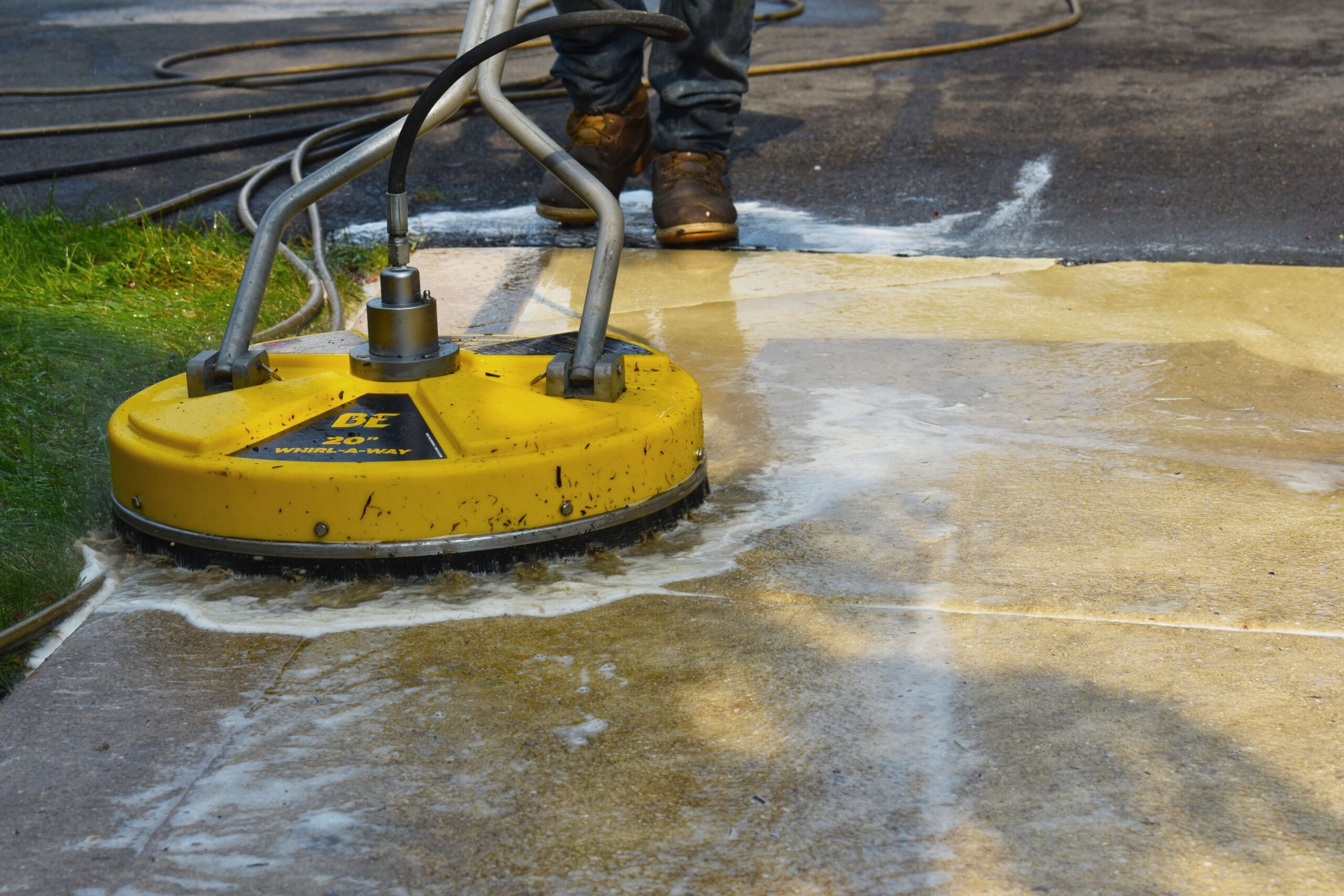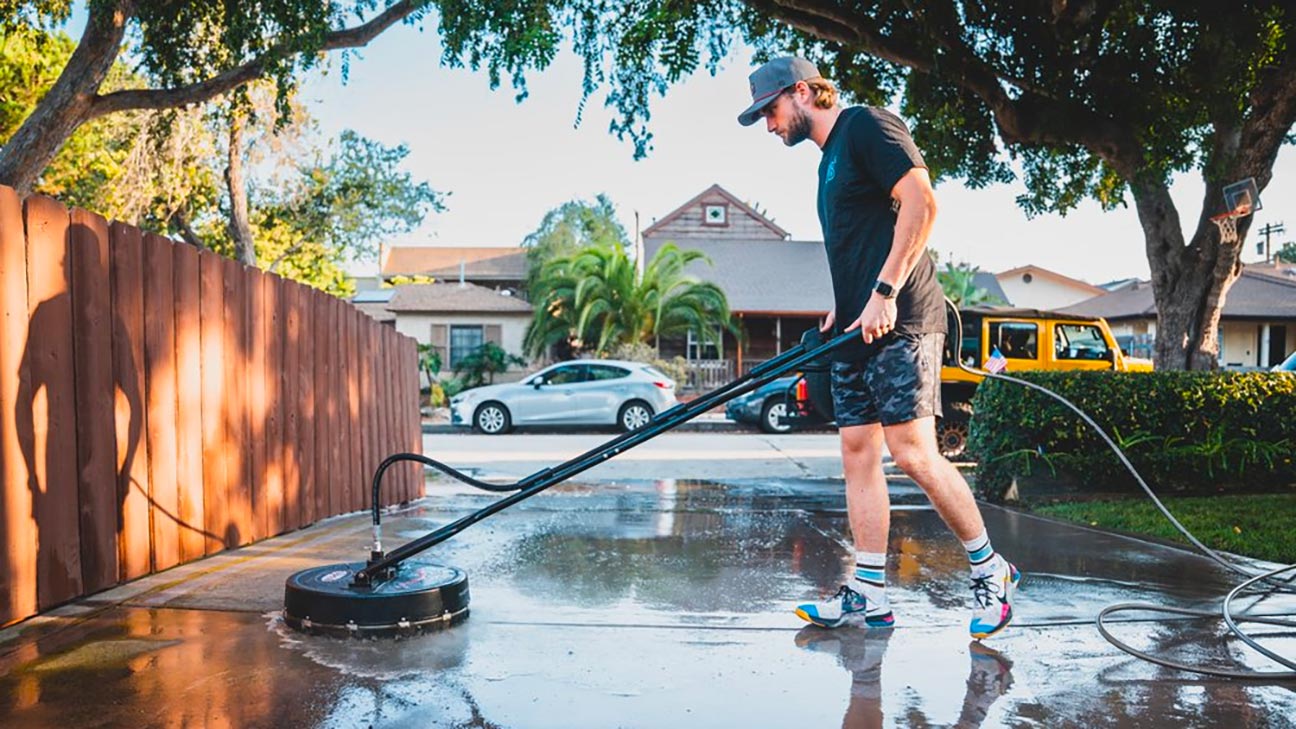Pressure Washing 101: Tips and Techniques for a Pristine Exterior
Pressure washing functions as a vital tool in maintaining the aesthetic appeal of various external surfaces, efficiently getting rid of built-up dirt and discolorations. Nevertheless, accomplishing a flawless surface requires not just the best equipment but also an understanding of particular methods and security measures. From picking proper nozzles to grasping proper cleansing approaches, each action plays a vital role in the total result. As we check out these crucial elements, you'll discover just how to boost your stress washing skills and guarantee your home remains in beautiful condition. The trip begins with understanding the fundamental principles that direct effective cleansing.
Recognizing Pressure Washing
Comprehending stress cleaning is necessary for achieving ideal cause outside cleaning tasks. This technique employs high-pressure water spray to eliminate dust, grime, mold and mildew, and various other contaminants from various surfaces, considerably boosting the visual allure and longevity of landscapes and frameworks.
The process involves using specific tools that generates water pressure commonly varying from 1,500 to 4,000 psi, relying on the surface and cleansing needs. For example, softer surface areas like timber may require reduced pressure settings to prevent damages, while concrete can endure higher pressures for effective cleansing. Along with pressure, the temperature of the water can also play a crucial duty; warm water can liquify oil and oil better than cool water.
Choosing the proper nozzle is one more vital element, as different nozzles create varying spray patterns and stress levels. Understanding the kinds of surface areas-- such as vinyl, brick, or asphalt-- aids in tailoring the pressure cleaning technique to prevent possible damages.

Crucial Devices Needed
To kick off a successful pressure washing job, having the right devices on hand is critical. Select one with flexible stress settings, usually ranging from 1,500 to 3,000 PSI, depending on the surface areas you'll be cleaning.
Next, invest in different nozzles to attain different spray patterns - Pressure Washing Lockhart. A 0-degree nozzle offers a focused stream for tough stains, while a 25-degree or 40-degree nozzle is suitable for more comprehensive applications

Safety Precautions to Follow
Prioritizing security is crucial when participating in stress washing, as the high-pressure water jets can position significant risks if not handled properly. Before starting, analyze your workplace for prospective dangers such as electric lines, vulnerable structures, or slippery surface areas. Make certain that the location is free from blockages, family pets, and people to avoid crashes.
Constantly use ideal personal protective tools (PPE) This includes safety goggles to secure your eyes from flying debris, handwear covers to protect your hands, and durable shoes with non-slip soles. Consider wearing lengthy sleeves and pants to lessen skin exposure to high-pressure water, which can cause injuries.
Keep a safe distance from the surface being cleansed, as the pressure can trigger damage or injury if intended directly at skin or fragile products. Familiarize yourself with the pressure washer's controls and readjust the pressure settings according to the particular job at hand.
Techniques for Efficient Cleansing
Having actually developed a solid structure of safety precautions, it's time to concentrate on the strategies that will certainly make certain effective cleaning with a pressure washer. The primary step is to choose the proper nozzle. A bigger spray pattern, such as a 25-degree nozzle, you can try these out is perfect for surfaces like driveways, while a 40-degree nozzle suits delicate areas like painted timber.
Next, constantly start cleansing from the leading and function your means down. This method avoids dust and debris from falling onto locations that have actually currently been cleaned up. Maintain a regular distance of around 12 to 24 inches from the surface area to prevent damages.

Last but not least, keep in mind to rinse the surface after cleaning to get rid of any type of residual cleaner. This last step is vital for stopping streaks and ensuring a pristine finish. By applying these methods, you will accomplish optimum outcomes and extend the life of Click This Link your surface areas, enhancing the total appearance of your building.
Preserving Your Pressure Washing Machine
How can you make certain the durability and optimal efficiency of your stress washing machine? Furthermore, check and clean the air filter to advertise optimal airflow and performance.
After each usage, it is important to purge the system with tidy water to get rid of detergents and debris that can trigger obstructing. Shop your pressure washing machine in a dry, sheltered atmosphere to secure it from climate components, and make sure that all links are secure before storage.
Pay special attention to the nozzle; clean it often to stop obstructions and keep efficient splashing. Maintain the high-pressure pipe cost-free from twists and leaks, as any type of damage can compromise capability and safety.
Lastly, refer to the supplier's guidebook for details maintenance suggestions, including seasonal checks. By sticking to these techniques, you can extend the life of your stress washing machine and guarantee it operates at peak performance whenever you require it.
Final Thought
In conclusion, pressure cleaning serves as an efficient approach for invigorating outside surface areas, efficiently removing accumulated dust and spots. Normal maintenance of pressure cleaning equipment, consisting of routine oil adjustments and nozzle cleaning, is required to make certain constant efficiency.
